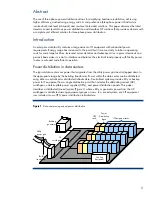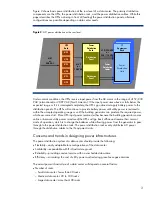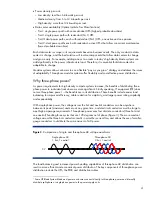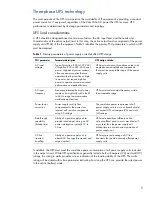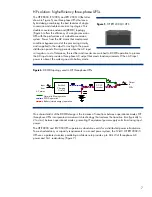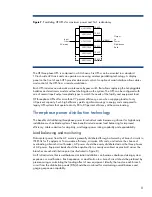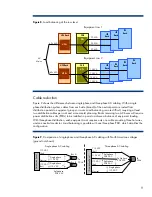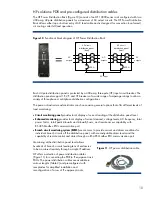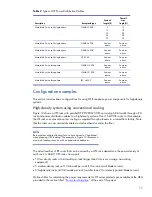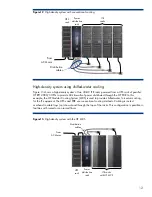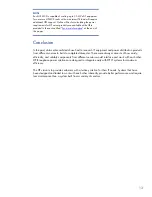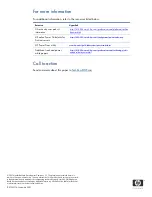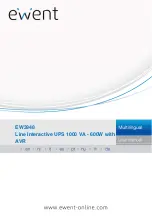
Three-phase UPS technology
The main purpose of the UPS is to maximize the availability of IT equipment by providing a constant
power source for IT equipment, regardless of the state of the AC power the UPS receives. UPS
performance is determined by its design parameters and topology.
UPS load considerations
A UPS should be designed based on two main factors: the AC input feed, and the needs and
characteristics of the active output load. In this case, the active output load is comprised of the power
supply units (PSUs) of the IT equipment. Table 1 identifies the primary PSU parameters to which a UPS
must be designed.
Table 1
. Primary parameters of power supply units that affect UPS design
PSU parameter
Parameter description
UPS design criteria
AC input
voltage
Typically low-line (100 to 127 VAC)
or high-line (200 to 240 VAC) input
power. High-density server systems
often use power supplies that can
operate with either low-line or high-
line power, but require high-line
power to operate at maximum rated
performance and peak efficiency.
UPS must maintain a three-phase output with
single-phase and split-phase components
that meet the acceptable range of the power
supply units.
AC input
frequency
Frequency tolerated by most power
supply units is typically within the 47
to 64 Hz range to accommodate
worldwide applications.
UPS must maintain output frequency within
the acceptable range
Power factor
correction
Power supply circuitry that
compensates for the power loss
inherent with reactive components
using AC voltage
The cumulative power requirement of all
power supply units in a circuit branch should
not exceed UPS volt-ampere (VA) and watt
(W) ratings
Ride-through
capability
(holdup time)
Ability of a power supply unit to
provide rated output during an AC
power interruption, typically 12 to
20 ms.
UPS mode transitions (offline-to-online,
online-to-offline) need to occur much faster (5
ms or less) than the power supply unit
holdup time to ensure constant operation of
power supply unit.
AC line
transient
handling
Ability of a power supply unit to
absorb AC line sags (brownouts) and
surges (spikes)
UPS must prevent passing on AC line
transients that would adversely affect power
supply units.
In addition, the UPS must meet the cumulative power consumption of all power supply units included
in the output circuit. While UPS specifications generally include both volt-amperes (VA) and watt (W)
ratings, the rating in watts provides a truer indication of the loading ability of the UPS. The watts
rating will be stated with a time parameter indicating how long the UPS can provide the rated power
in the online (battery) mode.
5


